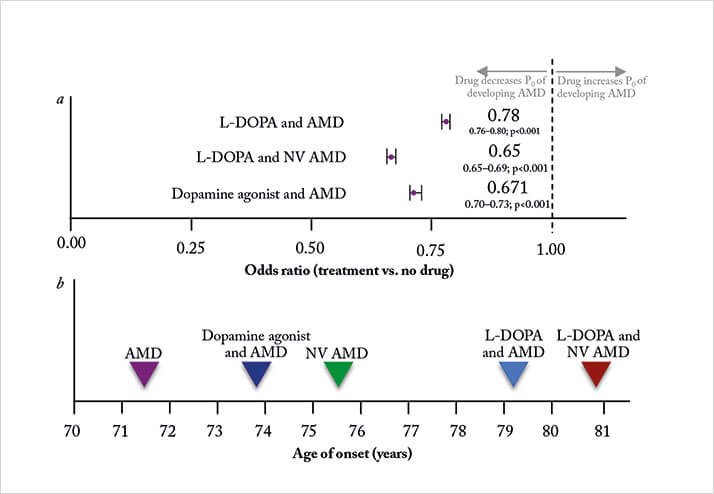
The pharmaceutical industry, in some ways, has it tough. To take a drug from discovery to market takes on average 13.5 years and more than US$2 billion. But to take an existing, marketed drug and repurpose it for a new indication (remember, sildenafil was originally approved to treat angina) costs far less, and takes considerably less time. The advent of “big data” (1) – in this case, the combination of electronic medical records (EMRs) and large amounts of processing power – has yielded Big Pharma a relatively inexpensive method of mining for drugs that might be worth further evaluation for a new application. And it looks like this approach has identified an existing drug that appears to be protective against AMD – both wet and dry (2). The drug? The antiparkinsonian agent, L-DOPA. To be fair, this work wasn’t entirely done using brute-force processing power to interrogate a big EMR dataset for as many correlations as possible: the researchers from the University of Arizona who did the data mining already had an idea of where to look – having previously discovered a G protein-coupled receptor that L-DOPA binds and activates: GPR143 (3). Expressed in the retinal pigment epithelium, they found that GPR143 activation by L-DOPA increases the expression of a potent anti-angiogenic factor, pigment epithelium-derived factor (PEDF), and decreases the expression of vascular endothelial growth factor (VEGF).
The approach the researchers took to the EMR analysis was both simple and elegant. They examined the health records of 37,000 Marshfield Clinic patients, looking for those with AMD, those taking L-DOPA and those with AMD who received L-DOPA – and then determined the age at which patients developed AMD. They then took that approach to Truven MarketScan database’s ophthalmology records – which comprised 15,215,458 individuals – and found that L-DOPA use was highly significantly associated with a lower risk of developing AMD, and a lower average age of onset of the disease (Figure 1).
L-DOPA use isn’t without side effects, but if it’s an agent that can delay the onset of AMD, it is clearly something of great value – and the study authors view a clinical trial as the obvious next step in determining whether this drug from the 1960s has a future in this role.
References
- P Sudbury, “Big Data in Medicine and Ophthalmology”, The Ophthalmologist, 9, 16–23 (2014). Available at: bit.ly/TOP0614. MH Brilliant, et al., “Mining retrospective data for virtual prospective drug repurposing: L-DOPA and age-related macular degeneration”, Am J Med, S0002-9343(15)01019-0 (2015). PMID: 26524704. VM Lopez, et al., “L-DOPA is an endogenous ligand for OA1”, PLoS Biol, 6, e236 (2008). PMID: 18828673.
